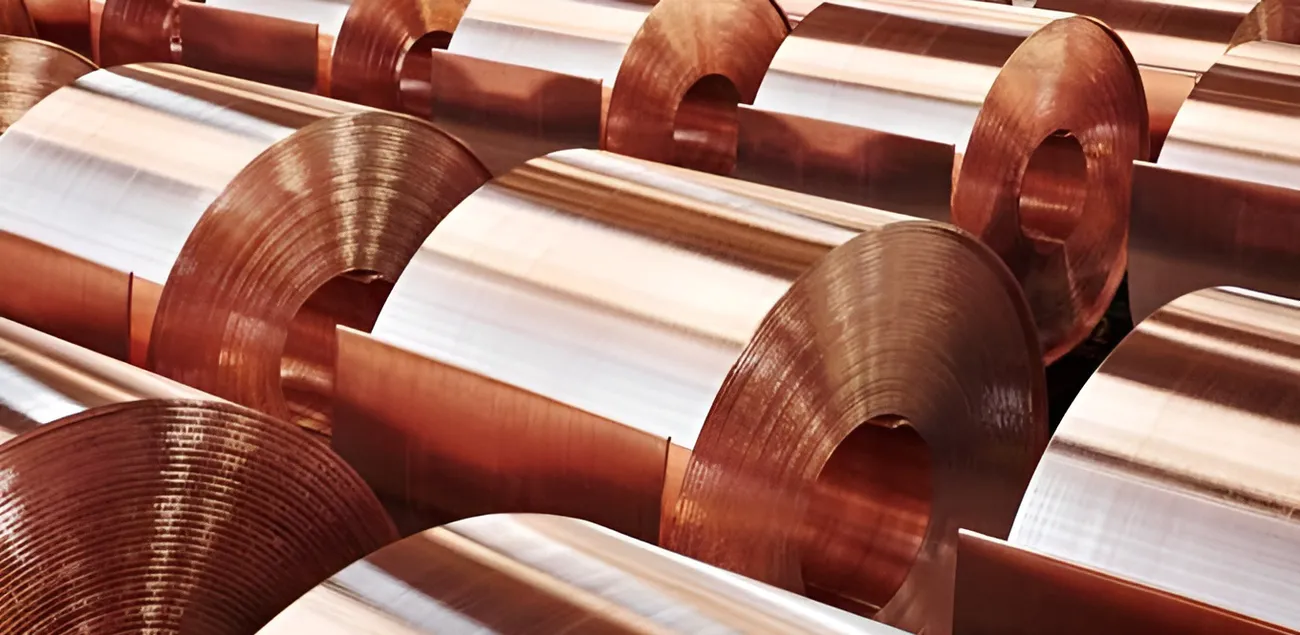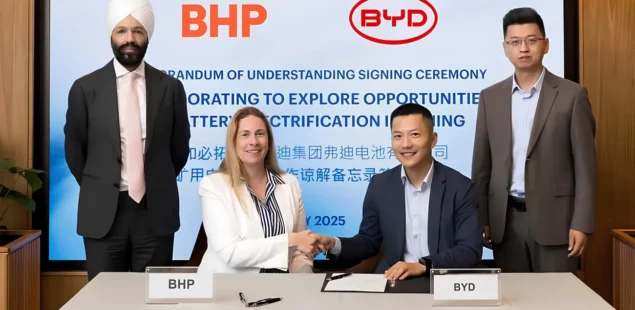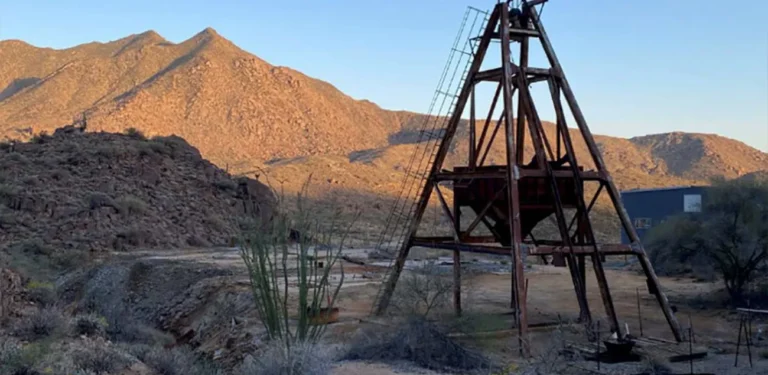
Copper Tariffs, Lithium Discoveries, and Shifting Global Metals Markets
Copper grabbed the spotlight last week, following a surprise policy shift in the U.S. and fresh signs of trouble at production sites worldwide. Meanwhile, major lithium developments and structural shifts in non-ferrous metals pointed to a global industry in motion.
On July 1, U.S. President Donald Trump confirmed that a 50% tariff on copper imports would kick in August 1—sooner than the early 2025 rollout many had anticipated. The announcement, made on Trump’s social media platform, came with warnings about national security. Copper, he said, is essential to everything from semiconductors and lithium-ion batteries to hypersonic weapons. He called it “the second most important material for the Department of Defense” and blamed previous administrations for undermining domestic supply chains. The tariff, he insisted, would help correct that.
Copper inventories in the U.S. jumped after the news, with stockpiles reportedly hitting around 500,000 tons—mostly held in New Orleans and Port Panama City. While flows from certain regions are slowing, large volumes are still making their way into U.S. ports. Traders are now racing to manage cargoes already en route and weighing whether to rush new shipments. With the 50% duty coming in higher—and faster—than many had budgeted for, some buyers are said to be offering premiums of up to $400 per ton to fast-track deliveries. Some are even rerouting shipments originally headed to China. Routes through Hawaii and Puerto Rico are seeing renewed interest, given their potential to beat the tariff clock.
Still, a lot of details remain murky—chief among them: will in-transit cargoes be exempt? Price spreads between New York and London remain narrower than the tariff would suggest, reflecting lingering market hesitation. For now, traders are trying to hedge their bets between short-term costs and longer-term payoff.
While the policy is pitched as a boost for domestic output, scaling up copper production in the U.S. is a long-term challenge. In the short run, American industries will stay dependent on overseas supply—meaning higher costs for consumers or a potential squeeze in usage across manufacturing and infrastructure.
At present, the U.S. meets only about half of its own copper needs. Including recycled material, consumption stands at roughly 1.8 million tons a year—just one-eighth of what China uses. In 2024, Freeport-McMoRan produced 572,000 tons of copper in the U.S., while imports hit 810,000 tons. Most of those imports came from Chile (65%), followed by Canada (17%) and Peru (9%).
With the U.S. market tightening, copper could start piling up in Chile, Canada, Mexico, and Peru—the main exporters to American buyers. These countries may feel the fallout from the tariff more acutely than those already facing direct U.S. trade restrictions. On top of that, sluggish growth in China—the top global copper consumer—could keep additional pressure on prices worldwide.
China Discovers Major Lithium Deposit
While copper stirred geopolitical waves, China dropped a bombshell of its own: a record-breaking lithium find in Hunan Province. The provincial Department of Natural Resources announced that a 490-million-ton deposit had been identified, capping off years of high-tech exploration. What makes it unusual is the geology—the lithium is embedded in altered granite, unlike the pegmatites of Australia or the salt flats of South America. The rock is trickier to process but, when done right, can yield exceptionally pure lithium.
The exact classification of the granite—possibly metasomatic or clay-like formations—is still under review. But the deposit also contains rubidium, tungsten, and tin. Rubidium’s niche applications include specialty glass and high-tech devices, while tungsten is critical for cutting tools. Tin remains essential for everything from soldering electronics to coating steel in food cans.
The find is a strategic win for China, bolstering its already strong grip on the global lithium supply chain. According to the U.S. Geological Survey, China produced 41,000 tons of lithium last year, behind only Australia (88,000 tons) and Chile (49,000 tons). Its reserves, at 3 million tons, still trail Chile’s 9.3 million and Australia’s 7 million—but that gap may narrow quickly.
Despite leading global production, China still imports substantial amounts of lithium from Australia and South America. But that may be changing. Since 2021, new reserves totaling 30 million tons have been confirmed across Sichuan, Qinghai, Jiangxi, Xinjiang, and Inner Mongolia.
Forecasts now suggest China could ramp up to 900,000 tons of lithium per year by 2035. By comparison, Argentina is projected to reach 380,000 tons, Chile 435,000, and Australia 680,000. If those numbers hold, China could ease off foreign imports—just as global demand keeps climbing.
India Expands Copper Output, Faces Raw Material Bottleneck
In India, Hindustan Copper is moving aggressively to increase output. The country’s lone vertically integrated copper producer has unveiled a $240 million expansion plan aimed at tripling its raw material capacity. The push focuses on operations in Madhya Pradesh, Jharkhand, and Rajasthan, boosting annual production and processing from 3.75 million tons to 12.2 million.
Hindustan Copper runs mines in five states—Rajasthan, Jharkhand, Madhya Pradesh, Maharashtra, and Gujarat. Total ore reserves clock in at 411.53 million tons, with broader resource estimates reaching 623.31 million. Despite the growth, the company is staying close to home, supplying local players like Hindalco and Adani’s new copper facility. Domestic sales bring faster cash flow than the longer cycles tied to global exports.
This expansion fits into India’s broader “Make in India” push to cut back on imported copper and ramp up local manufacturing. The government is simultaneously investing in energy grids, railways, and EV infrastructure. As a result, copper demand could double in just five years—from 1.3 million tons last year to 2.6 million.
Yet the picture isn’t all rosy. India still relies heavily on imported ores and concentrates. New deposits are rare, and favorable geology is even rarer. Indian buyers frequently find themselves in direct competition with Chinese firms for raw materials—driving up costs and import volumes. That tug-of-war complicates efforts to meet demand through domestic means alone.
Western Metallurgy Under Pressure from China’s Expansion
Meanwhile, China’s rapid buildout of non-ferrous smelting capacity is putting Western producers in a tight spot. Just last month, Chinese firms agreed to process copper ore from South America’s Antofagasta without charging beyond the base price of the ore—an aggressive move that breaks with the long-standing global model where processing fees made up a big chunk of revenue.
China’s cathode copper output hit 1.135 million tons in June—an all-time high—driven by relentless growth in smelting capacity and a worldwide shortage of copper concentrate. Benchmark Mineral Intelligence expects that deficit to hit 1.1 million tons this year, rising to 2.6 million in the next.
The scale of Chinese production is staggering. Smelters there added 8% to capacity last year, with overall growth running at about 10% annually. That brought total capacity to nearly 12.8 million tons. And they’re doing it cheap—thanks to economies of scale and hefty government subsidies, Chinese producers can keep costs around $1,200 per ton, far below the global average of $1,800.
Western operators are feeling the heat. Glencore, for instance, is weighing whether to shut its Mount Isa smelter and Townsville cathode plant in Australia—both reportedly losing up to $30 million per month.
Still, some Western facilities retain strategic edge. Take Rio Tinto’s Kennecott Utah Copper plant, which produces tellurium—a key metal for microelectronics—thanks to the unique makeup of its ores and vertically integrated operations. That kind of diversification may help non-Chinese smelters stay afloat as the competitive gap widens.
Glencore Sells Southeast Asian Asset Amid Market Turmoil
In another sign of industry strain, Glencore has offloaded its Pasar plant in the Philippines. The buyer? The family of billionaire and former lawmaker Manny Villar, who holds large stakes in retail, real estate, and consumer goods.
Glencore pulled the plug on production at Pasar earlier this year, citing poor returns and a broader review of its copper and zinc assets. Even though the facility sits in a prime spot—taking in concentrate from Australia, Indonesia, and South America—the economics just didn’t add up.
Pasar typically turns out 1.2 million tons of LME-certified copper cathodes for Asian markets. The sale underscores a broader trend: smelters scaling back or consolidating amid historic lows in copper processing margins.
Nickel Sector Faces Similar Pressures
The nickel industry isn’t escaping the squeeze, either. Australian miner South32 has agreed to sell its Cerro Matoso plant in northwest Colombia for $100 million—well below its $230 million book value. The buyer, CoreX Holding, is expected to finalize the deal by the end of the year.
Operating since 1982 near the Panamanian border, Cerro Matoso produced 41,600 tons of ferronickel in 2024. But with prices down and competition fierce, the plant—like many others—is proving hard to keep profitable.



